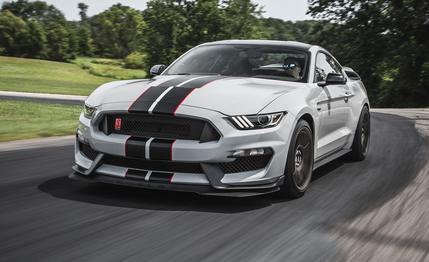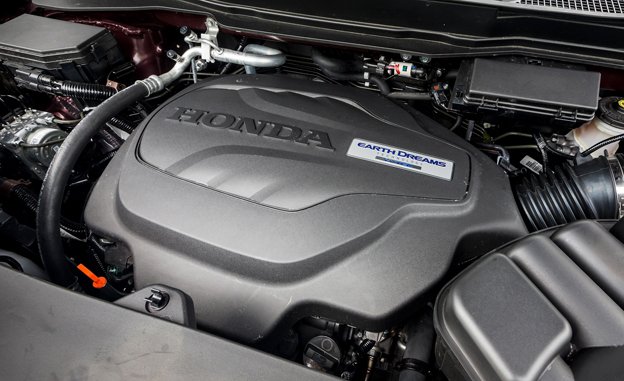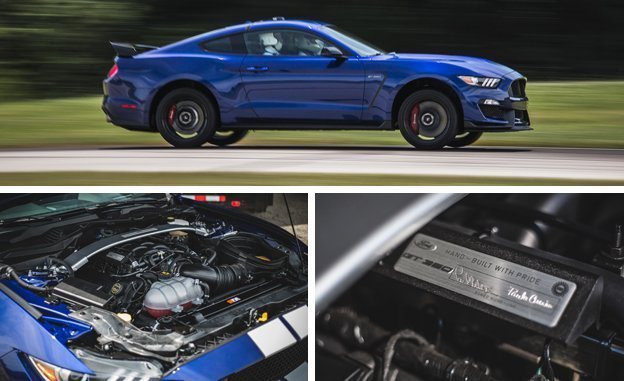
 First Ride
First Ride
Fully two years after the first inklings of the 2016 Ford Mustang Shelby GT350 and its ultra-focused R variant began to trickle across the autosphere, Ford has finally seen fit to let outsiders experience what is poised to be the most potent naturally aspirated production Mustang ever. Since the two cars’ auto-show debuts (the GT350 dropped in Los Angeles, the GT350R in Detroit), Ford has meted out details carefully, keeping enthusiasts and media on a need-to-know basis—as in, “we need to know, and Ford keeps stringing us along.” That ends now.
Before you start firing shots in the air and chugging hooch in celebration, notice we said Ford was letting us “experience” the car. No, we didn’t get to drive it. But we did get to ride in it, stroke its flanks, and stare at it all googly-eyed while its flat-plane-crankshaft V-8 sang its siren song. Think of it this way: If you had a rich friend who booked Michigan’s Grattan Raceway for the day and invited you to ride along in preproduction super-Mustangs, you’d jump at the opportunity, right? Thought so.
Just prior to us suiting up for hot laps in the GT350R, Ford detailed the adjustable chassis settings available in every GT350 and GT350R. There are five modes—Normal, Sport, Weather, Track, and Drag—that act on the accelerator response, the traction- and stability-control system, steering effort, magnetorheological dampers, exhaust system, and launch-control program.
Normal puts everything in its default setting and is intended for regular driving, while Sport is for “spirited on-road driving” and sharpens the accelerator, puts the shocks in their middle setting, selects the firmer of the two steering settings, and opens the exhaust to full bellow. Weather mode softens accelerator response, locks out launch control (the only setting to do so), tightens the stability-control reins, and leaves everything else in Normal mode. Track, on the other hand, raises the threshold of the traction and stability control while also opening the exhaust and selecting the firmest shocks and heavier steering. Finally, Drag activates launch control, enhances throttle response, puts the dampers into a launch-optimized setting, and opens the exhaust.


Fully briefed, we strapped into the passenger seat; gave our driver, Ford Performance engineer Mark Lecrone, the thumbs-up; and headed out for a warm-up lap at about six-tenths. While these sorts of laps were done to warm the tires, brakes, and engine, we have no doubt Lecrone also used them to gauge whether his various passengers might redecorate the GT350R’s interior with the contents of their stomachs. This also gave him an opportunity to demonstrate the drive modes in real time, switching among Normal, Sport, and Track to illustrate how capable the chassis is regardless of which lines of code were active.
After the warm-up, our cast-iron guts verified, Lecrone let it rip, braking hard and diving into corners with the precision of a guy who has spent countless hours refining the GT350R on some of the premier racetracks in the world. Throughout the ride, the car remained level and balanced, exhibiting a totally neutral character, while Lecrone moved the wheel very little to keep the car on its intended path. And the grip—there’s lots of it. Even when the tires started to howl in protest, Lecrone would stay in the throttle, and the car barely strayed from his chosen line.
Particularly impressive was how, when cresting Grattan’s “jump”—where the track drops steeply just ahead of the Turn 5, 6, and 7 complex—the car still managed to hug the tarmac, exhibiting very little lift, and escaped without touching its bump stops or the track surface. Our biggest takeaways were how utterly composed and tight the GT350R feels as a whole, and that even with the magnetic dampers working overtime to handle the irregularities of the circuit, the GT350R nevertheless also displayed an improbably comfortable ride throughout the experience. (For much more on the GT350 and GT350R’s specific chassis and suspension upgrades, head here.)
The GT350R’s brakes are also hugely impressive. Designed for minimal fade and to have, as Ford says, “the best brake-pedal feel in the world,” the binders employ 15.5-inch two-piece rotors and six-piston Brembo calipers up front and 15-inch two-piece rotors with four-piston calipers at the rear. While we can’t confirm Ford’s hubris-laden statement on feel until we get some wheel time of our own in a GT350R, we can testify that the brakes arrest forward travel at near-frightening levels, pinning us against the restraints in a way few other street-licensed cars can come even close to matching. Yet the Mustang remains poised under hard braking; when Lecrone pushed hard on the pedal at the end of the long front straight, the R exhibited little to no dive and there was absolutely no unruly behavior (squealing, chattering, grabbing) from the brakes themselves.
We also managed to personally examine the GT350R’s much-ballyhooed 19-inch carbon-fiber wheels, which are said to save 60 pounds total over the aluminum ones fitted to the GT350. Light enough to lift with one hand—approximately 18 pounds each—the carbon wheels are finished in a sinister gloss black so smooth you can practically see into the abyss. Measuring 11 inches wide in the front and 11.5 inches wide at the back, the wheels wear Michelin Pilot Sport Cup 2 tires (305/30 front and 315/30 rear) that were specially engineered for the GT350R. As a Michelin rep told us trackside, “Wherever Ford went to develop the GT350 and GT350R—Laguna Seca, Virginia International Raceway, the Nürburgring—we were there.”
A lot has been made of the unique sonic properties of Ford’s ultra Mustang. Already quite burly sounding in the GT350, the GT350R forgoes exhaust resonators entirely, adding not only volume but also a textured, nay, exotic component, as well. Under hard acceleration, the high-revving flat-plane-crank V-8 emits a belligerent midrange wail that clearly indicates that chaos is being harnessed for a greater good.


The GT350R’s 5.2-liter aluminum V-8, with its 526 horsepower and 429 lb-ft of torque, is naturally aspirated and (as detailed in our deep dive) boasts plenty of technical and metallurgical adaptations that advance it far past its several-times-removed cousin, Ford’s 5.0-liter Coyote V-8. Regardless of how you feel about its pedigree, we can now say firsthand that this engine pulls hard from idle to its lofty 8250-rpm redline, wailing all the way.
The powerband is thick, as evidenced when Lecrone snapped off a quick three-four shift at full tromp that threw our heads back and then forward like we were in the front row of a Slayer concert. In less aggressive situations, the powertrain is as docile as you please, but the V-8’s wall of torque almost—almost—seemed to render operating the six-speed manual transmission superfluous.
Now we wait to confirm all of this awesomeness with the last vital piece of information remaining regarding the GT350R: What it feels like from the left seat. And our time is coming soon.